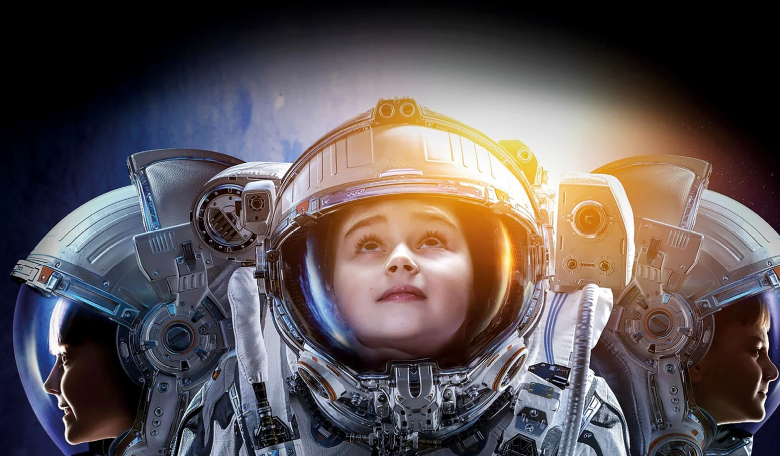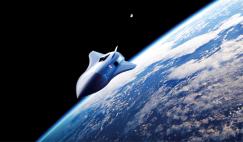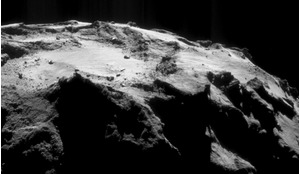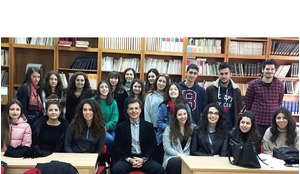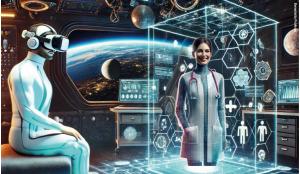Space is one of the indisputable cogs that keep our modern 21st century world and global economy turning. But despite its importance and its inspiring and spectacular nature, the industry at large can become too insular and often fails with its own public relations. Not only does this create risks to the industry, particularly when it comes to funding, but it can also limit the public’s understanding of the role space plays in everyday life. In this article, international author and keynote speaker Shelli Brunswick advocates a balanced and more open approach that champions space exploration while diligently protecting our planet.
In an era of rapid technological progress, space exploration is deeply interconnected with our daily lives. It continues both to promise and deliver profound scientific insights and innovative opportunities.
Debates about the merits of space exploration span business, academic and governmental circles. While some emphasise the urgency of Earth conservation and environmental protection, noting that it is our primary residence, others advocate for space ventures as a strategic solution to Earth’s many challenges. This debate broadens perspectives on economic development, scientific progress and educational inspiration fostered by space exploration.
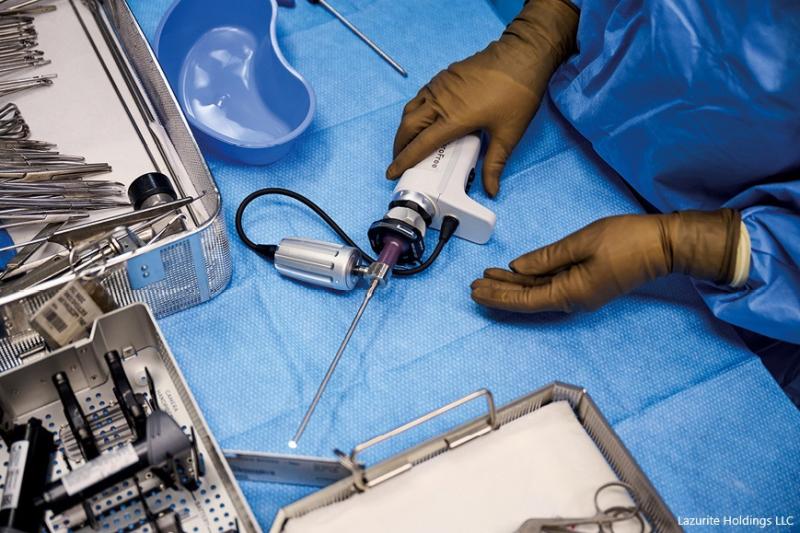 Medical device company Lazurite’s ArthroFree Wireless Camera System is the first FDA-cleared wireless arthroscopic camera for minimally invasive knee surgeries and other orthopaedic procedures. The device incorporated aerospace-grade lithium-ion batteries after the developers consulted with NASA engineers on technical specifications.
Medical device company Lazurite’s ArthroFree Wireless Camera System is the first FDA-cleared wireless arthroscopic camera for minimally invasive knee surgeries and other orthopaedic procedures. The device incorporated aerospace-grade lithium-ion batteries after the developers consulted with NASA engineers on technical specifications.
Economic engine
As NASA prepares for new missions to the Moon and Mars, it also positions its commercial space partners to enhance their national economies through these efforts
The importance of space exploration extends far beyond scientific interest. Today it serves as a powerful engine for economic development and technological advancement, with recent analyses (McKinsey & Company, April 2024, Space: The $1.8 trillion opportunity for global economic growth) highlighting the expected robust growth in the global space economy, projecting an increase from US $630 billion in 2023 to $1.8 trillion by 2035. This expansion is attributed to advances in core technologies such as satellite communications and GPS, as well as broader applications supporting a whole range of industries, including transportation, logistics and agriculture.
The significant return on investment historically offered by space exploration also underscores its economic impact. For example, the Apollo programme of the 1960s, despite constituting only four percent of the US federal budget at its peak, returned an estimated $7 for every $1 invested over approximately a decade. More generally, investments in basic space research are today expected to generate $40 of economic growth for every dollar spent, thanks to the potential for technological spinoffs and new industries.
This economic stimulus is also evident in specific sectors, such as the commercial satellite industry, which is expected to reach $13.7 billion by 2030, driven by advances in miniaturisation, small satellite technologies and megaconstellations. Further afield, the very real prospect of asteroid mining, such as that of asteroid 16 Psyche, which is valued at approximately $10 trillion, further highlights the untapped economic potential within the space sector.
These insights collectively emphasise the strategic importance of investing in space exploration to leverage its potential for economic growth and technological innovation while, at the same time, helping to address some of humanity’s biggest challenges, like the climate crisis.
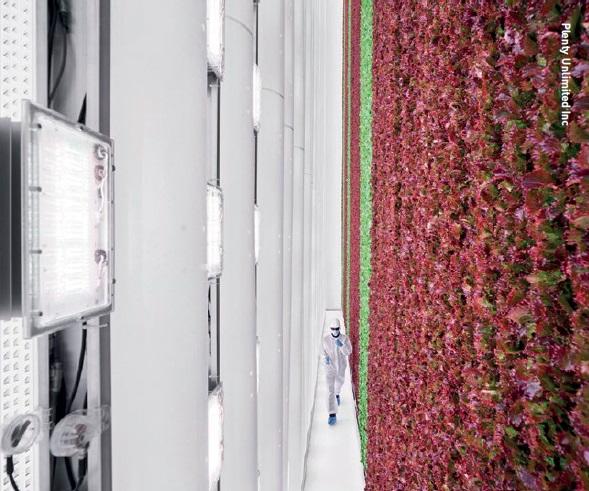 Plenty Unlimited is one of several companies building on NASA plant-growth research to bring agriculture into the urban environment. Plenty’s farming model uses less than one percent of the water required by traditional farming and yields a consistent harvest year-round, regardless of weather. Robotics are used at nearly every step of the farming process and the growing environment mimics the closed-loop environment developed by NASA in the Biomass Production Chamber that demonstrated how to grow plants without sunlight and open air.
Plenty Unlimited is one of several companies building on NASA plant-growth research to bring agriculture into the urban environment. Plenty’s farming model uses less than one percent of the water required by traditional farming and yields a consistent harvest year-round, regardless of weather. Robotics are used at nearly every step of the farming process and the growing environment mimics the closed-loop environment developed by NASA in the Biomass Production Chamber that demonstrated how to grow plants without sunlight and open air.
Scientific and technological advancement
The profound impact of space exploration on technological and scientific advancement is evident, with benefits extending across almost all sectors of society and the global economy. From the development of lightweight materials and high-efficiency solar panels to innovations in medical imaging and water purification, space technologies have enhanced our daily lives.
Some technologies initially developed for space missions have been successfully adapted to create more efficient batteries for medical devices, such as the FDA-approved wireless arthroscope that uses aerospace-grade batteries for minimally invasive surgeries. Additionally, techniques for growing food in space inspire more sustainable vertical farming methods on Earth.
The $71.2 billion in total economic output during fiscal year 2021 exemplifies how NASA’s technology transfer initiatives have had a significant effect. NASA Administrator Bill Nelson emphasised the importance of these advances, stating: “Investment in NASA missions is an investment in American workers, American innovation and American competitiveness for the 21st century.”
The advancement of space technologies has laid the groundwork for the next significant step in space exploration: the development of a cislunar economy. As NASA prepares for new missions to the Moon and Mars, it also positions its commercial space partners to enhance their national economies through these efforts.
This emerging economic domain, integrating Earth and the Moon along with their orbital environments, aims to sustain diverse space-related economic activities. While still developing, the economic potential of the cislunar sector is considerable, with various analyses suggesting significant growth as technologies and the market mature.
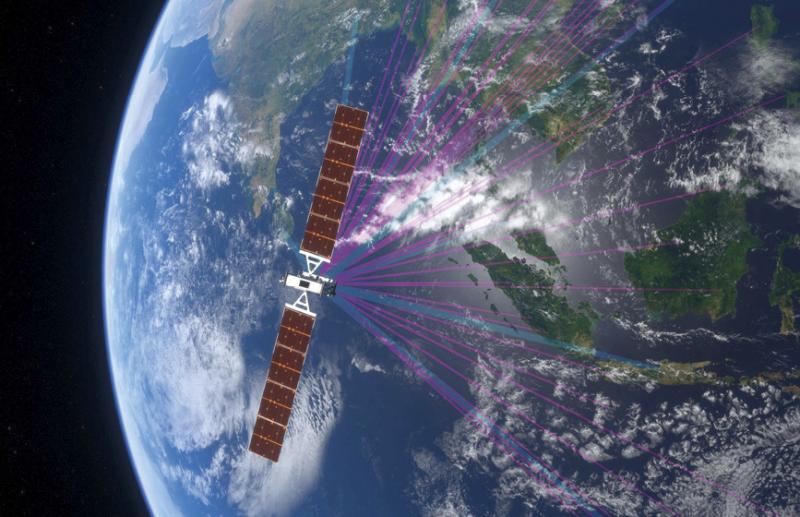 The O3b mPOWER communications satellite system, owned and operated by SES provides global broadband connectivity for a range of applications including cellular backhaul and international IP trunking, cruise line connectivity, disaster recovery, and military communications. The company’s video service, with TV channels distributed by satellite over ‘direct-to-home’, (DTH) makes up around 50 percent of its revenue.
The O3b mPOWER communications satellite system, owned and operated by SES provides global broadband connectivity for a range of applications including cellular backhaul and international IP trunking, cruise line connectivity, disaster recovery, and military communications. The company’s video service, with TV channels distributed by satellite over ‘direct-to-home’, (DTH) makes up around 50 percent of its revenue.
Inspiration and education
The ongoing commitment to space inspires future generations to look beyond our planetary boundaries
Space exploration not only serves as a frontier for scientific and technological advancement but also as a profound source of inspiration and education, capturing the imagination of people worldwide.
The Apollo Moon landings, for example, were not only a monumental technological feat but also a crucial moment that inspired countless individuals to dream big. The iconic images and stories of astronauts walking on the lunar surface left a lasting impression, encouraging a generation to pursue careers in engineering, mathematics and sciences.
Educational initiatives that incorporate space themes, such as SpaceKids Global™, play a crucial role in this inspirational ecosystem. By exposing children to the wonders of space and the principles of science, technology, engineering and mathematics (STEM), these programmes ignite curiosity and passion for exploration and innovation from an early age.
The influence of space exploration extends across popular culture too, where movies such as Apollo 13 and songs like David Bowie’s ‘Space Oddity’ encapsulate the challenges and triumphs of astronauts. These works not only entertain but also deepen the public’s connection to space exploration, highlighting the human aspects of space missions and helping to maintain public interest and support for these costly endeavours.
Moreover, the synergy between educational programmes, cultural influences and the tangible benefits derived from space exploration not only enriches our current society but also ensures a legacy of continued innovation and exploration. This ongoing commitment to space inspires future generations to look beyond our planetary boundaries and consider what might be possible in the broader cosmos.
Expanding horizons
Space exploration presents significant challenges, particularly when it involves humans. These include costs, health risks and technological obstacles.
Ethical and legal considerations regarding space colonisation, resource utilisation and celestial environmental impact require careful examination and international cooperation.
While the visionaries of California’s Silicon Valley imagine a future among the stars, other voices remind us of our responsibilities to Earth. These are not mutually exclusive goals.
By leveraging the advancements and opportunities of space exploration, we can better protect and improve life on Earth. Through economic benefits, scientific progress and social inspiration, space exploration remains a crucial endeavour for humanity. It’s not an escape from our problems but a way to expand our horizons and solve them on our planet.
 Sea turtles serve as key indicators of ocean health because their wellbeing depends on the health of their ecosystem. Today, all sea turtles are considered endangered and being able to track them is becoming increasingly important. Tracking green sea turtles is now possible due to a tracking system in low Earth orbit. Lightweight transponders are designed to attach to the animal’s shell without interfering with its ability to swim. Water temperature, dive depth, and other data collected anywhere on the planet is transmitted along with a GPS signal when the turtle surfaces. As the shell sheds layers, the transponder falls off or it can be safely removed from a nesting turtle. Any stored data can then be downloaded.
Sea turtles serve as key indicators of ocean health because their wellbeing depends on the health of their ecosystem. Today, all sea turtles are considered endangered and being able to track them is becoming increasingly important. Tracking green sea turtles is now possible due to a tracking system in low Earth orbit. Lightweight transponders are designed to attach to the animal’s shell without interfering with its ability to swim. Water temperature, dive depth, and other data collected anywhere on the planet is transmitted along with a GPS signal when the turtle surfaces. As the shell sheds layers, the transponder falls off or it can be safely removed from a nesting turtle. Any stored data can then be downloaded.
About the author
Shelli Brunswick has navigated through distinguished roles within the US Air Force, as Chief Operating Officer of Space Foundation, and is currently CEO & Founder of SB Global LLC. A fervent advocate for space technology, innovation, and collaboration, Shelli is a prolific author and sought-after keynote speaker. Her role as a thought leader and engagement with think tanks, such as the Hudson Institute and the Wilson Center, illuminate her capacity to shape conversations around innovation and technology. Her forthcoming book, What’s Space Got To Do With It? 10 Life Lessons for Personal Growth, encapsulates 25 years of space industry insights. This primer on courage, resilience, and innovation offers potent strategies for personal and professional growth, with lessons from the cosmos.





